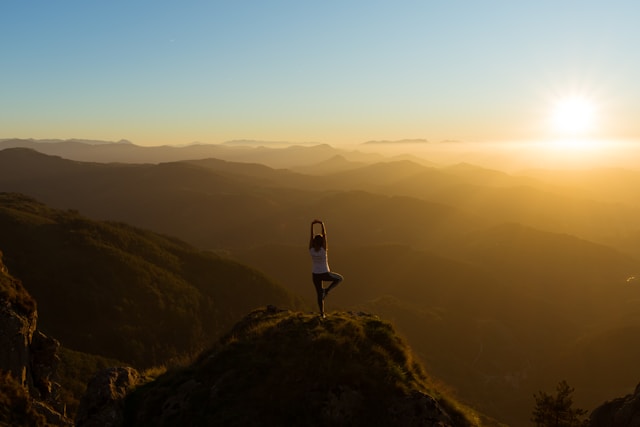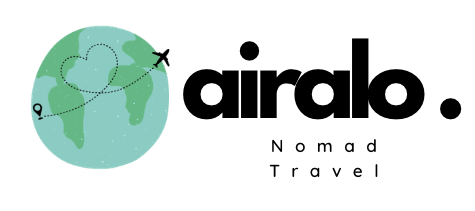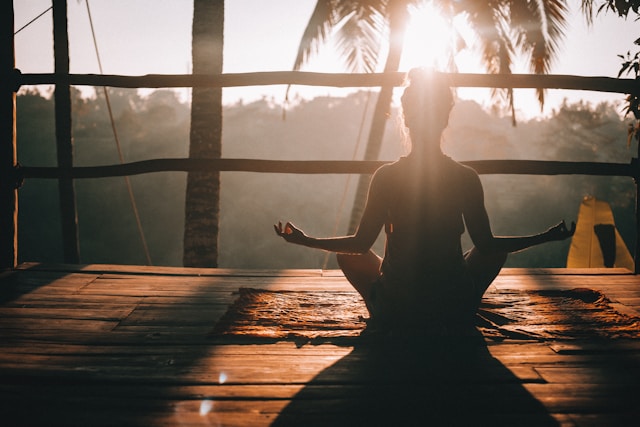
As a digital nomad, who often works and travels in different places, it is common to face pressures from work and life. Dealing with different time zones, adjusting to new environments, and managing the pressures of work and life can be challenging. Learning to relax is crucial for maintaining physical and mental well-being and improving work efficiency. Here are some relaxation methods recommended in this article that can help you:
Incorporate daily relaxation activities:
It is important to schedule regular relaxation activities every day, such as meditation, breathing exercises, yoga, walking, or reading. These activities can help you recharge, alleviate stress, and enhance focus.
Let’s take a look at some methods provided in the video “How to Relax” by Dr. Eric Berg DC:
“I want you to take all the tension out of your forehead, all the wrinkles, the creases. Relax your forehead, okay? Just let it go. Now, what about your scalp? Is there any tension in your scalp? Relax your scalp, just let it go. Relaxation is kind of just doing nothing. You’re not focusing on anything specifically, you’re just letting it go, all right? Now, let’s talk about your eyes. There’s quite a few muscles around the eyes. Relax all the muscles around the eyes, and just let the eyes go limp in their sockets. Good, you got that. Good. Try to relax it more. Just let it go, and just melt those muscles, all right? Let’s talk about the breathing. You want to slow down your breath and have a nice, equal breathing in and breathing out, and as you breathe out, just relax your chest, all right? Now, let’s talk about your jaw. The jaw muscles probably are going to be holding the most tension of your entire body, so I want you just to relax your jaw muscles, let them go to the point where your mouth actually opens. Can you do that? You’re going to find that your upper back starts to relax when your jaw is relaxed. So many people are grinding their teeth at night, and they’re holding so much tension in their jaw.
So, even when you actually eat, you want to relax your jaw muscles because that’s where a lot of tension builds up, all right? Now, let’s relax your lips and your tongue, and then let’s relax the neck. Let’s start with the front of the neck. Any tension going on with the front of the neck, just let it go. All right, now let’s go to the back of the neck. This is where a lot of people have a lot of tension, so just let it go and relax the back of your neck, and then the upper shoulders, the trapezius muscles, that’s the muscles on the top of the shoulders. Let’s start with the right side. Just let that muscle go. Just pretend like it’s melting right now. All right, let’s do the right arm.”
Create a balance between work and leisure:
Creating a balance between work and leisure is crucial. As a digital nomad, it’s easy to blend work into your daily life while traveling. Therefore, set clear boundaries for work and leisure. Allocate specific time slots dedicated to work and fully relax and enjoy your travel during non-work hours.
Find suitable environments for relaxation:
Finding suitable environments for relaxation is important. It’s crucial to separate your living and working spaces, avoiding working in your living area. You can choose comfortable and relaxing work environments. During your digital nomad journey, consider staying in quiet places or places with relaxing facilities like indoor pools, gyms, or relaxation areas.
Set boundaries between work and rest:
Set clear boundaries between work and rest to avoid overworking. Learn to say “no” and plan your work tasks reasonably to ensure you have enough time to relax and enjoy your travels.
Try new experiences:
Allocate time to try new experiences and activities, such as exploring local attractions, participating in cultural events, or trying new cuisines. These experiences can help you relax and enrich your travel experiences.
Maintain physical health:
Pay attention to your diet, sleep, and exercise to maintain good physical health. A balanced diet, sufficient sleep, and moderate exercise can enhance your body’s resilience and energy levels.
Identifying reasons for inability to relax:
Understanding the sources of stress is important when learning relaxation techniques. In the video “How to Relax” by Bryan Russell | TEDxKeene, some methods are provided:
“I was taught that the autonomic nervous system was autonomous, that it could not be controlled. Well, it may be literally true, we cannot tell our heart rate to go down, cannot tell my heartbeat to go faster, but I can influence and direct the autonomic nervous system by choosing activities that stimulate this relaxation state or choosing activities that stimulate this energized state. We do it all the time, whether we’re aware of it or not. So, let’s do an experiment and see if we can stimulate this energy state.
Can you feel this shift towards an energized state? Right? So, if I’m able to make a choice and stimulate your energized response, imagine the choices you can make to stimulate your energized response. What are some other things that create stress in our life that stimulate this energized response? What are some things that may keep you up at night or other things that create stress in your life? Perhaps it’s small things like waking up to an alarm clock or feeling a sense of rush or urgency as you get ready and drive to work. Perhaps it’s an extra project or deadline that’s coming. Perhaps it’s some relationship challenges that you have that are causing stress in your life. It’s great that we can have this energized response in the body because otherwise, we’d never get anything done. But it’s not healthy to be stimulated all the time with chronic stress. In fact, it’s very, very unhealthy. Statistics show that 75 to 90% of doctor’s visits are for stress-related reasons. So, that’s 90% of the times that we go to the doctor because we’re in a stress state, we’re stimulated, and it would cause these challenges with our health. So, we need some ways to stimulate this relaxation response and bring relaxation into our body.”
How can we stimulate our relaxation response? Some basic methods that we already know include the following, as provided by the video “How to Relax” by Bryan Russell | TEDxKeene:
“Relaxing music will often stimulate this relaxation response.There are many other things that can stimulate this relaxation response in the body: taking a warm bath, mindfulness meditation, journaling, guided imagery, practicing yoga, getting a massage, taking a walk, breathing the fresh air, and drinking herbal tea. Hopefully, we all have a few things in our life that can stimulate this relaxation response.”
Of course, there are even better methods. Let’s take a look at the description in the video “How to Relax” by Bryan Russell | TEDxKeene and get moving together:
“So if you will, we could all stand up. We’re just going to be up for one or two minutes, breathing maybe 12 breaths together. It’s so simple and yet so powerful. Of all the things that I teach in the 200-hour course, these two minutes are the most important thing that I share with people, and that’s why I wanted to share them with you today.
So the first thing we’re going to do is breathe with our belly. The idea is when we breathe with our belly, it stimulates this relaxation response. It stimulates the parasympathetic nervous system. When we breathe and our chest moves, it stimulates the energized response. So we can bring our hands on our belly, one or both hands. We’re just going to take five breaths. We can inhale, the belly out, and exhale, the belly in. Inhale, push the belly out, and exhale, the belly in. A couple more times: inhale, belly out, and exhale, belly in. Inhale, belly out, exhale, belly in. One more time on your own.
Again, when we breathe in and our belly moves, it stimulates the relaxation response. The other way we can stimulate the relaxation response with our breath is by exhaling. Every exhale we stimulate this parasympathetic nervous system, and every inhale we stimulate the energized response. So we’re going to do what I call the extended exhale and exhale for a longer period of time than the inhale. The same amount of air is coming in and out; otherwise, we wouldn’t be able to do it very long. But we’re going to exhale more slowly. So we’re going to inhale for a count of 3 and exhale for a count of 6.
So, standing tall, heart open, shoulders back, you can have your hand on your belly or not, either way. You can close the eyes if you’d like. I’m just going to inhale: 1, 2, 3, and exhale: 1, 2, 3, 4, 5, 6. Inhale: 1, 2, 3, exhale: 1, 2, 3, 4, 5, 6. Inhale: 1, 2, 3, exhale: 1, 2, 3, 4, 5, 6. Inhale: 1, 2, 3, exhale: 1, 2, 3, 4, 5, 6. And one more on your own.”
Remember, relaxation is a skill that can be learned and improved over time. As digital nomads, it’s important to prioritize self-care and consciously make an effort to relax and recharge. Learning to relax is an essential part of maintaining a work-life balance for digital nomads.
One of the core teachings of yoga describes that when we quiet the mind, we can act from a place more connected to the soul. Not only do we become more connected to our soul, but our cognitive abilities increase when we are in this state of tranquility. Just like when our mind is no longer preoccupied with survival issues, we can see connections instead of divisions, see solutions instead of problems, see love instead of fear. By practicing these simple relaxation techniques, we can come closer to the state of a quiet mind. When we find ourselves moving towards an energetic state, remember that it decreases cognitive abilities and increases our primitive reactions. It is hoped that digital nomads can enhance their cognitive abilities and work efficiency by taking appropriate measures and adopting healthy habits, thereby gaining more relaxation and joy in their travels and work.
This article references the following video sources:
https://www.youtube.com/watch?v=xlwC5-3iMXw
https://www.youtube.com/watch?v=P96mwXALxzE
If you have more questions or need assistance with tax-related matters, feel free to leave a message or add our official WeChat account to access a range of professional services, including tax planning, consulting, immigration, and digital nomad assistance





